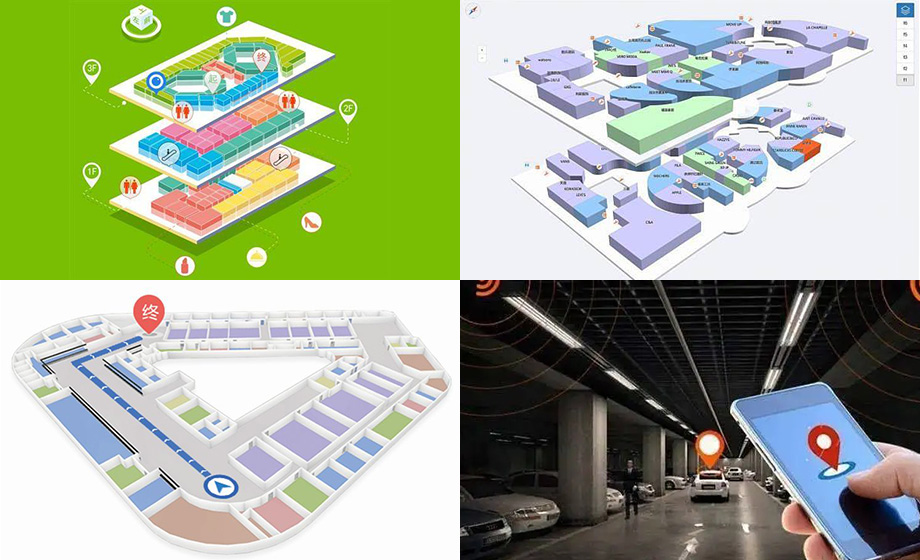Indoor positioning personnel positioning system uwb module is better than WiFi/ Bluetooth, indoor is the main place of human life. In addition to the home, more business transactions, public entertainment and work took place indoors. Therefore, under the background of the development of 5G in the Internet of Things, the acquisition of location information and the technical support of application in the project scenario are becoming more and more important. The working environment of indoor positioning is more complex and refined, and its technologies are more diversified. Our common indoor positioning technology is also widely used in different scenes to achieve different positioning purposes.

What are the common indoor positioning technologies? Generally speaking, according to different technical principles and the use of signal sources, indoor positioning technology can be divided into the following categories:
According to the principle of positioning: ID positioning, interval positioning, three-side positioning, signal arrival Angle positioning, fingerprint positioning, inertial calculation, etc.
According to the signal source used for positioning: Wi-Fi positioning, ZigBee positioning, Bluetooth positioning, personnel positioning system uwb module UWB positioning, RFID positioning, satellite positioning, low-frequency trigger positioning, base station positioning, acoustic positioning, optical positioning, geomagnetic positioning, etc.
In the future, indoor positioning technology will sweep all aspects of our production and life, such as intelligent factory personnel and cargo management and scheduling, production safety management, underground parking lot navigation, intelligent building personnel/visitors positioning management, exhibition location navigation, etc.
Below, we will detail the advantages and disadvantages of these common indoor positioning techniques:
Bluetooth positioning: Centimeter-level positioning, but poor stability
Indoor positioning technology based on Bluetooth has been applied in the field of monitoring and positioning. mesh In a year and a half, more than 105 Bluetooth mesh products with networking capabilities have been certified, including chip, protocol stack, module and terminal product vendors.
In order to meet the growing demand of the location services market, the new Bluetooth 5.1 standard has added a finding feature that helps devices identify the direction of Bluetooth signals, and then helps developers interpret the Bluetooth proximity device direction (proximity) solution. The three-sided measurement method enables cross-cutting measurement algorithms to achieve indoor positioning. Bluetooth positioning system with centimeter-level position accuracy.
The transmission of Bluetooth indoor positioning technology is not affected by the visual distance, but for the complex space environment, the stability of Bluetooth system is slightly poor, the noise signal is greatly interfered with, and the price of Bluetooth equipment and equipment is relatively expensive. Therefore, the positioning range is not large, mainly used for small positioning of people.
Wi-Fi positioning: Strong positioning signal, high accuracy in meters
Wi-Fi location is a popular indoor location technology, which is based on signal strength transmission model method and fingerprint recognition method. In some scenarios where the positioning accuracy is meters, Wi-Fi coverage can be used. Therefore, it can not be used in high-capacity, high-precision occasions. Indoor positioning technology is applicable to people/vehicles positioning and navigation, medical institutions, shopping malls, theme parks and other scenarios.
Personnel positioning system uwb module UWB: High precision, high capacity, strong stability, anti-interference
UWB is a high (up to more than 1000Mbps), low transmission power, strong penetration of wireless indoor positioning technology. uwb module UWB location is analyzed by different sensors using TDOA (TimeDifferenceofArrival) and AOA location algorithm. It has the features of multi-path resolution, high precision and positioning accuracy up to cm.
TDOA is a method of positioning by using the arrival time difference, also known as hyperbolic positioning. The label card sends a UWB signal once, and all base stations within the wireless coverage range of the label will receive the wireless signal. If two base stations with known coordinate points receive the signal, the interval between the labels and the two base stations is different, then the two base stations receive the signal at different time points.
Personnel positioning System uwb Module Positioning systems, such as the signal time-based positioning system, UWB, need to be redeployed once they encounter a wall blockage. Double the number of rooms and base stations in the same area, making it easier to deploy in open scenarios.
At present, the positioning technology of UWB tunnel, chemical plant, prison, hospital, nursing home, mine and other industries is used.
The above indoor positioning technologies are generally used in indoor scenarios. Due to the complex indoor environment, the signal receiving strength is easy to fluctuate, and it is difficult to achieve accurate positioning using only the signal strength. Therefore, according to the different measurement parameters, the positioning method can also be based on the arrival time of the received signal and the arrival Angle of the received signal.
Depending on the signal characteristics and network structure, the positioning accuracy of indoor positioning technology can range from centimeter to meter. In different scenarios, we need to consider not only precision performance, but also cost and power consumption. Therefore, despite the high accuracy of UWB module of personnel positioning system, other positioning technologies also have their own markets.



